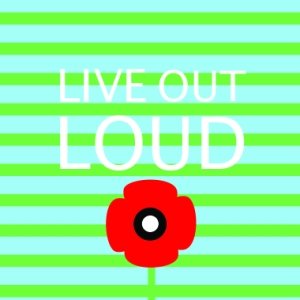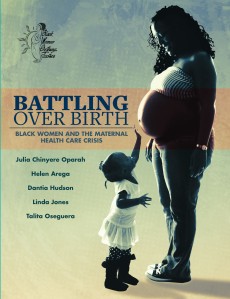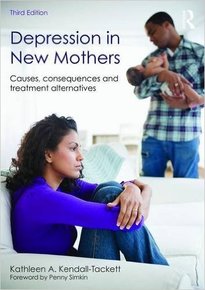Kathleen Kendall-Tackett, PhD, IBCLC, FAPA looks at the psychological trauma of childbirth in our time.
Birth trauma: an issue in our time
I first became interested in childbirth-related psychological trauma in 1990. Twenty-seven years ago, it was not on researchers’ radar. I found only one study, which reported that there was no relation between women’s birth experiences and their emotional health. I had heard too many harrowing birth stories to be convinced by those results.
To better understand this issue, I immersed myself in the literature on posttraumatic stress disorder (PTSD). During the 1980s and 1990s, most trauma researchers were interested in the effects of combat, the Holocaust, or sexual assault. Not birth. But in volume II of Charles Figley’s classic, Trauma and Its Wake: Traumatic Stress Theory, Research and Intervention, I stumbled upon something that was quite helpful in understanding the possible impact of birth. In summarizing the state of trauma research in the mid-1980s, Figley stated that an event will be troubling to the extent that it is
“sudden, dangerous, and overwhelming.”
That was a perfect framework for me to begin to understand women’s experiences of birth. Focusing on women’s subjective reactions, I used this to describe birth trauma in my first book, Postpartum Depression (1992). The book is now in its third edition (2016) and titled Depression in New Mothers: Causes, Consequences and Treatment Alternatives.

Since the first edition, there has been an explosion of excellent research on the subject of birth trauma. The study results are distressing: high numbers of American women have posttraumatic stress symptoms (PTS) after birth. Some even meet full criteria for posttraumatic stress disorder. For example, Lamaze International’s Listening to Mothers Survey II included a nationally representative sample of 1,573 mothers. They found that 9% fully met the diagnostic criteria for posttraumatic stress disorder following their births, and an additional 18% had PTS. These findings also varied by ethnic group: a whopping 26% of non-Hispanic black mothers had PTS. The authors noted that “the high percentage of mothers with elevated posttraumatic stress symptoms is a sobering statistic” (Beck, Gable, Sakala, & Declercq, 2011).
If the number of women meeting the full criteria for PTSD does not seem very high, then let’s compare it to another number. In the weeks following September 11, 7.5% of the residents of lower Manhattan met those full criteria (Galea et al. 2003). Take a minute to absorb these statistics. In at least one large study, the rates of full-criteria PTSD in the U.S. following childbirth are now higher than those following a major terrorist attack.
In a meta-ethnography of 10 studies, women with PTSD were more likely to describe their births negatively if they felt “invisible and out of control” (Elmir, Schmied, Wilkes, & Jackson, 2010). The women used phrases, such as “barbaric,” “inhumane,” “intrusive,” “horrific,” and “degrading” to describe the mistreatment they received from health care professionals.
“Isn’t that just birth?,” you might ask. “Birth is hard.”
It certainly can be.
 What happens in countries where birth is treated as a normal event, where there are fewer interventions, and where women have continuous labor support?
What happens in countries where birth is treated as a normal event, where there are fewer interventions, and where women have continuous labor support?
In a prospective study from Sweden (N=1,224), 1.3% of mothers had PTSD and 9% described their births as traumatic (Söderquist, Wijma, Thorbert, & Wijma, 2009). Similarly, a study of 907 women in the Netherlands found that 1.2% had PTSD and 9% identified their births as traumatic (Stramrood et al. 2011). Both of those countries reported considerably lower rates of PTS and PTSD than those found in the U.S.
Impact of birth trauma on breastfeeding
Traumatic birth experiences may have an adverse effect on breastfeeding, as the mothers in one study describe:
“I hated breastfeeding because it hurt to try and sit to do it. I couldn’t seem to manage lying down. I was cheated out of breastfeeding. I feel that I have been cheated out of something exceptional.”
“The first five months of my baby’s life (before I got help) are a virtual blank. I dutifully nursed him every two to three hours on demand, but I rarely made eye contact with him and dumped him in his crib as soon as I was done. I thought that if it were not for breastfeeding, I could go the whole day without interacting with him at all.”
Breastfeeding can also be enormously healing, and with gentle assistance can work even after the most difficult births.
“Breastfeeding became my focus for overcoming the birth and proving to everyone else, and mostly to me, that there was something that I could do right. It was part of my crusade, so to speak, to prove myself as a mother.”
“My body’s ability to produce milk, and so the sustenance to keep my baby alive, also helped to restore my faith in my body, which at some core level, I felt had really let me down, due to a terrible pregnancy, labor, and birth. It helped build my confidence in my body and as a mother. It helped me heal and feel connected to my baby.”
How to help
Lactation consultants and supporters can do many things to help mothers heal and have positive breastfeeding experiences in the wake of traumatic births.
Recognize symptoms. While it is outside a lactation consultant’s remit to diagnose PTSD, listening to a mother’s story may, in itself, be healing. If you believe a mother has PTS or PTSD, or other sequelae of trauma, such as depression or anxiety, you can refer her to specialists or provide information about resources that are available (see the next point). Trauma survivors often believe they are going “crazy.” Knowing that posttraumatic symptoms are both predictable and treatable may be reassuring.
Refer to resources for diagnosis and treatment. There are a number of short-term treatments for trauma that are effective and widely available.
- Eye Movement Desensitization and Reprocessing (EMDR) is an effective type of psychotherapy and a frontline treatment for PTSD.
- Journaling about a traumatic experience may be helpful.
- The National Center for PTSD has many resources including a PTSD Coach.
- The site HelpGuide.org has many great resources including a summary of available treatments, lists of symptoms, and possible risk factors.
Anticipate potential problems. Severe stress during labor can delay lactogenesis II by several days (Grajeda & Perez-Escamilla, 2002). Be aware this may happen and work with the mother on a plan to counter it. Some strategies are to increase skin-to-skin contact, if the mother can tolerate it, and/or possibly start a pumping regimen until lactogenesis II has begun. She may need to supplement briefly, but that will not be necessary in all cases.
Recognize that breastfeeding can be quite healing for trauma survivors, but respect a mother’s boundaries. Some mothers may be too overwhelmed to initiate or continue breastfeeding. With gentle encouragement, a mother may be able handle it. If not, then respect that. If a mother decides not to breastfeed, gently encourage her to connect with her baby in other ways, such as skin to skin, baby wearing, or infant massage.

Partner with groups and organizations working to reform birth in the U.S. Childbirth Connection, for example.
There has also been a large upswing in the number of hospitals starting the process to become Baby Friendly, which will encourage better birthing practices.
I would like to see our hospitals implementing practices recommended in the Mother-Friendly Childbirth Initiative from the Coalition for Improving Maternity Services (CIMS).
High-intervention procedures, such as elective inductions are being actively discouraged by the March of Dimes. The American College of Obstetricians and Gynecologists has most recently (February 2017) published its Approaches to Limit Intervention During Labor and Birth. Hospitals with high cesarean rates are under scrutiny. The high rate of traumatic birth is not acceptable and it’s time to do something about it using the passion of grassroots advocates and the collaboration between clinicians and health care workers. This new landscape presents new opportunities for educators and advocates.
By advocating for all mothers, or simply by helping one traumatized mother at a time, we are able to make a difference. Thank you for all you do for babies and new mothers.
References
Beck, C. T., Gable, R. K., Sakala, C., & Declercq, E. R. (2011). Posttraumatic stress disorder in new mothers: Results from a two-stage U.S. national survey. Birth, 38(3), 216-227.
Beck, C. T., & Watson, S. (2008). Impact of birth trauma on breast-feeding. Nursing Research, 57(4), 228-236.
Declercq, E. R., Sakala, C., Corry, M. P., & Applebaum, S. (2007). Listening to Mothers II: Report of the Second National U.S. Survey of Women’s Childbearing Experiences: Conducted January–February 2006 for Childbirth Connection by Harris Interactive® in partnership with Lamaze International. The Journal of Perinatal Education, 16(4), 9–14.
Elmir, R., Schmied, V., Wilkes, L., & Jackson, D. (2010). Women’s perceptions and experiences of a traumatic birth: A meta-ethnography. Journal of Advanced Nursing, 66(10), 2142-2153.
Galea, S., Vlahov, D., Resnick, H., Ahern, J., Susser, E., Gold, J., . . . Kilpatrick, D. (2003). Trends of probable post-traumatic stress disorder in New York City after the September 11 terrorist attacks. American Journal of Epidemiology, 158, 514-524.
Grajeda, R., & Perez-Escamilla, R. (2002). Stress during labor and delivery is associated with delayed onset of lactation among urban Guatemalan women. Journal of Nutrition, 132, 3055-3060.
Söderquist, I., Wijma, B., Thorbert, G., & Wijma, K. (2009). Risk factors in pregnancy for post-traumatic stress and depression after childbirth. British Journal of Obstetrics & Gynecology, 116, 672-680.
Stramrood, C. A., Paarlberg, K. M., Huis in ‘T Veld, E. M., Berger, L. W. A. R., Vingerhoets, A. J. J. M., Schultz, W. C. M. W., & Van Pampus, M. G. (2011). Posttraumatic stress following childbirth in homelike- and hospital settings. Journal of Psychosomatic Obstetrics & Gynecology, 32(2), 88-97.
Some helpful resources to share with mothers
- Prevention and Treatment of Traumatic Childbirth (PATTCh)
- Midwifery Today Healing Birth Trauma
- Trauma and Birth Stress
- Posttraumatic Stress After Childbirth
- Birth Trauma Association
Kathleen Kendall-Tackett, PhD, IBCLC, FAPA
 Dr. Kendall-Tackett is a health psychologist and International Board Certified Lactation Consultant, and the owner and Editor-in-Chief of Praeclarus Press, a small press specializing in women’s health. She is Editor-in-Chief of two peer-reviewed journals: Clinical Lactation and Psychological Trauma. She is Fellow of the American Psychological Association in Health and Trauma Psychology, Past President of the APA Division of Trauma Psychology, and a member of the Board for the Advancement of Psychology in the Public Interest. Dr. Kendall-Tackett specializes in women’s-health research including breastfeeding, depression, trauma, and health psychology, and has won many awards for her work including the 2016 Outstanding Service to the Field of Trauma Psychology from the American Psychological Association’s Division 56.
Dr. Kendall-Tackett is a health psychologist and International Board Certified Lactation Consultant, and the owner and Editor-in-Chief of Praeclarus Press, a small press specializing in women’s health. She is Editor-in-Chief of two peer-reviewed journals: Clinical Lactation and Psychological Trauma. She is Fellow of the American Psychological Association in Health and Trauma Psychology, Past President of the APA Division of Trauma Psychology, and a member of the Board for the Advancement of Psychology in the Public Interest. Dr. Kendall-Tackett specializes in women’s-health research including breastfeeding, depression, trauma, and health psychology, and has won many awards for her work including the 2016 Outstanding Service to the Field of Trauma Psychology from the American Psychological Association’s Division 56.
Dr. Kendall-Tackett has authored more than 400 articles or chapters, and is currently completing her 35th book, The Phantom of the Opera: A Social History of the World’s Most Popular Musical. Her most recent books include: Depression in New Mothers, 3rd Edition (2016, Routledge UK, in press), Women’s Mental Health Across the Lifespan (2016, Routledge US, in press, with Lesia Ruglass), Psychology of Trauma 101 (2015, Springer, with Lesia Ruglass) and The Science of Mother-Infant Sleep (2014, Praeclarus, with Wendy Middlemiss). Her websites are:























4 Pingback